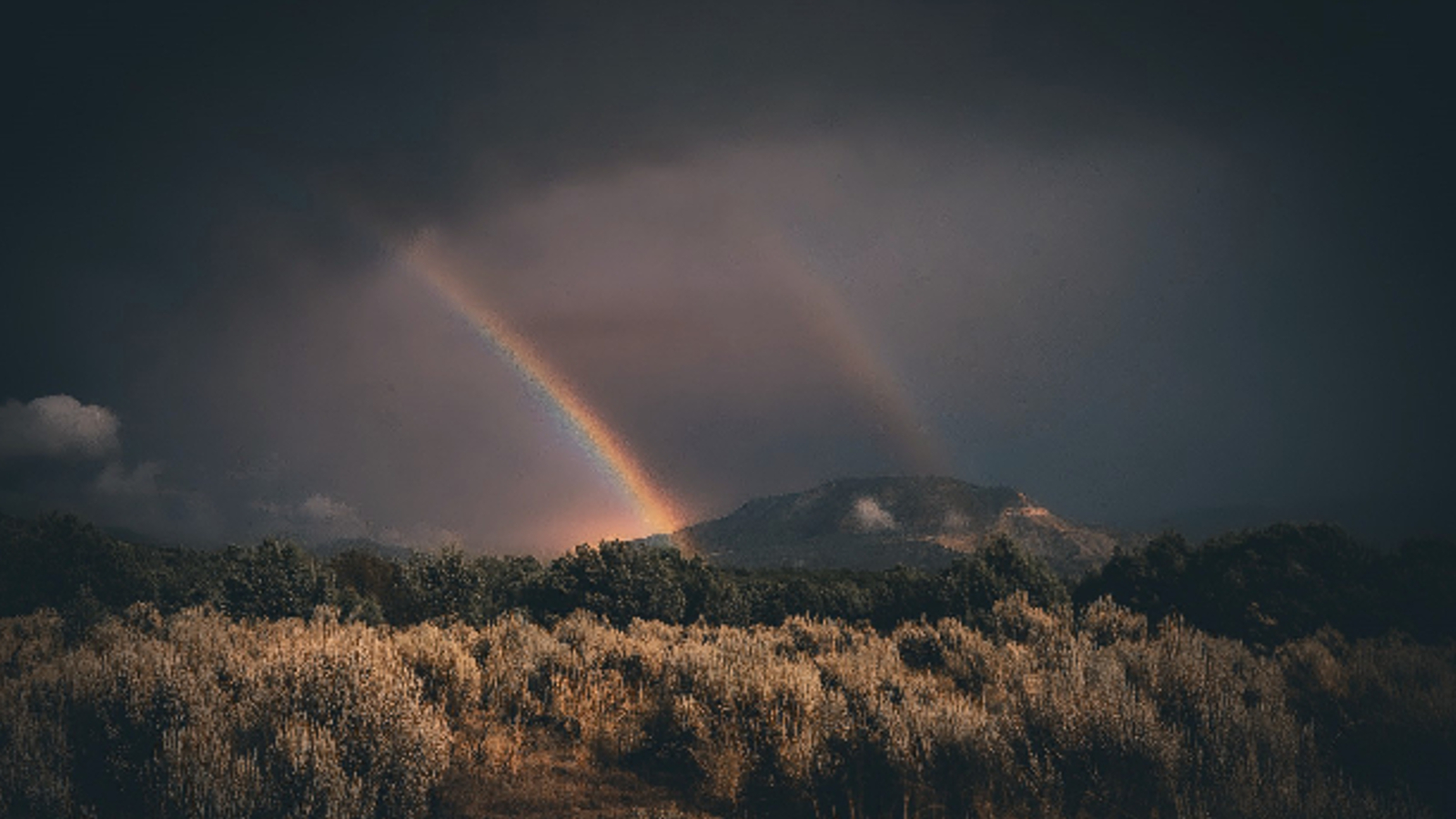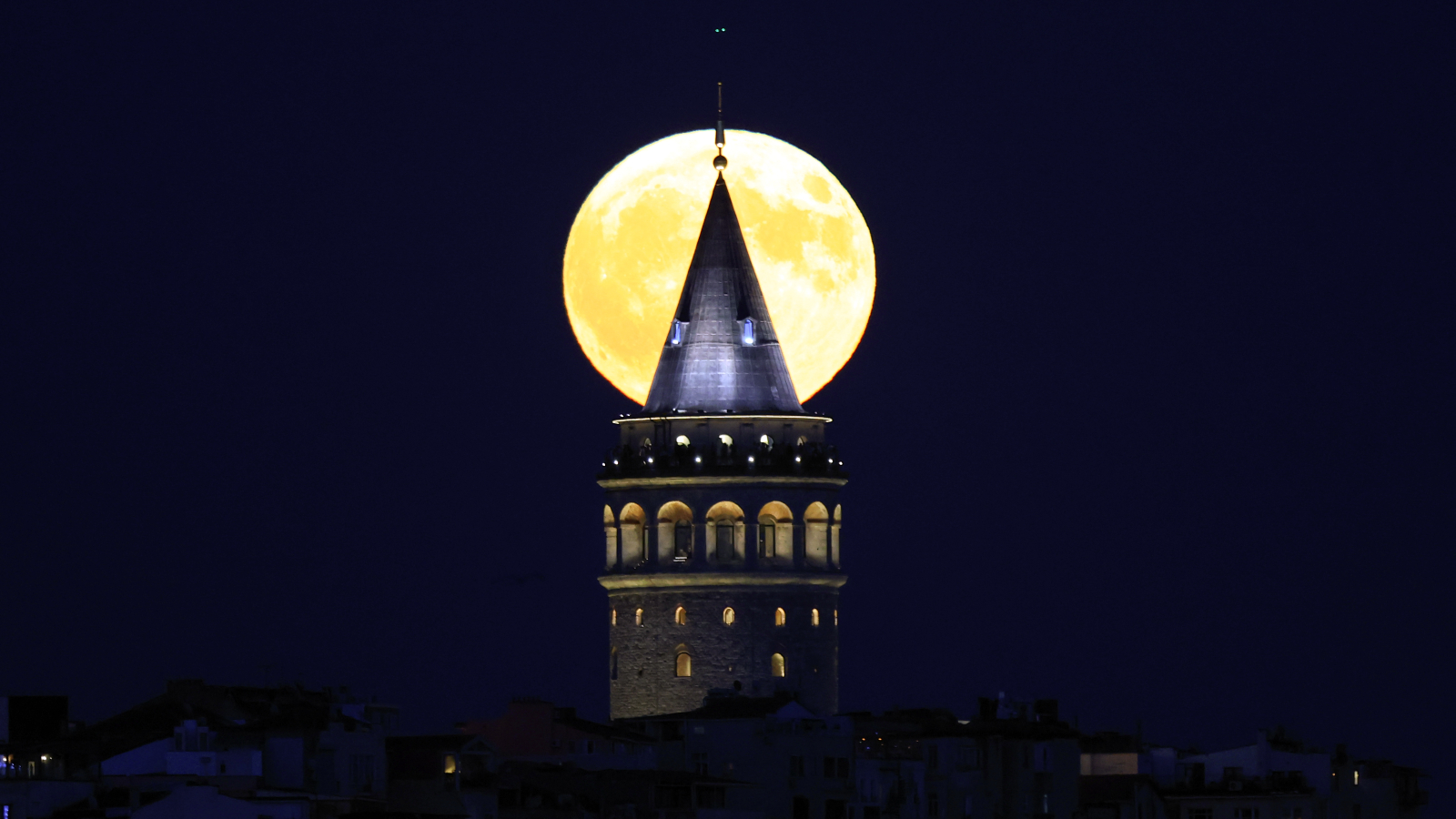Rare 'moonbows' light up night sky across US as blue supermoon rises — and you could still spot another one
At least two lunar rainbows, including a stunning "double moonbow," have been spotted above the U.S. in the lead-up to the blue supermoon. And there is still a chance to see one of these elusive arches for yourself.

Extremely rare, vibrant "moonbows" were spotted in the night sky above the U.S. shortly before the rise of the blue supermoon on Monday (Aug. 19).
The moon will remain bright for the next few nights, meaning you still have a chance to see this ethereal phenomenon for yourself, if you're lucky. And we can tell you how.
Moonbows, also known as lunar rainbows, are created in the same way as their solar counterparts, with one obvious difference: they appear when moonlight, rather than sunlight, reflects and refracts off falling raindrops. But they are much rarer because they can only be seen around a full moon, when our planet's natural satellite is at its brightest in the night sky.
Even then, the moonlight is so faint compared to the sun that the luminous arches normally appear white — that's because the color-detecting receptors in our eyes don't work well enough in dim light to distinguish between the spectrum of colors produced — namely, "ROYGBIV," according to the U.K. Met Office.
However, the moon has been unusually bright over the last few days in the lead-up to the "once-in-a-decade" blue supermoon, allowing more impressive examples of this phenomenon to emerge.
Related: 10 bizarre phenomena that lit up the sky (and their scientific explanations)

Astrophotographer Aaron Watson spotted a stunning double moonbow above Paonia, Colorado, at around 2 a.m. ET on Sunday (Aug. 18), Spaceweather.com reported.
Sign up for the Live Science daily newsletter now
Get the world’s most fascinating discoveries delivered straight to your inbox.
"It was vibrant and colorful even to the unaided eye and lasted several more minutes as it slowly faded," Watson told Spaceweather.com. The polychromatic light show was even brighter and more vivid just before the photo was taken, he added.
Another moonbow was then spotted the same night above Keuka Lake in New York state, Finger Lakes Daily News reported. This moonbow was less bright than the one photographed in Colorado but still showed distinctive rainbow-like colors on camera.
So far, there have been no reports of further moonbows being spotted during the main supermoon event on Monday.
Although the moon will be slightly less bright over the next few nights, it will still have a similar luminosity as it did when the recent moonbows were spotted. That means it should still be possible to see one. However, for this to happen, it will have to be raining where you are while also being clear enough for the moon's light to bounce off the raindrops.
If you want to look for a moonbow yourself, the bright arches are most clearly visible when the moon is closest to the horizon, so the best time to look is in the hours after sunset or before sunrise, according to BBC Sky at Night Magazine. And just like with regular rainbows, moonbows can only be spotted when the source of light — in this case, the moon — is located behind the observer.
If you manage to see an elusive moonbow, it will hopefully appear at least partially colorful to the naked eye. But if not, its colors could be more clearly visible in photographs, since cameras can capture the faint hues our eyes might miss.

Harry is a U.K.-based senior staff writer at Live Science. He studied marine biology at the University of Exeter before training to become a journalist. He covers a wide range of topics including space exploration, planetary science, space weather, climate change, animal behavior and paleontology. His recent work on the solar maximum won "best space submission" at the 2024 Aerospace Media Awards and was shortlisted in the "top scoop" category at the NCTJ Awards for Excellence in 2023. He also writes Live Science's weekly Earth from space series.









